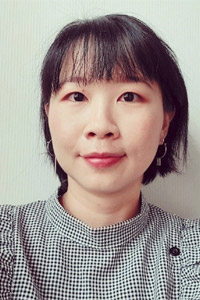
During my trip last week to the Bawah relocation area where nearly 500 houses have been newly built to accommodate over 1,000 people affected by the development of the Dawei Special Economic Zone (DSEZ) in Myanmar, it caught me by surprise that most of the houses are unoccupied.
The project is located in the north of Dawei town in Myanmar's southern Tanintharyi region. It is supposed to be a liveable relocation area for for those whose homes and plantations were cleared to pave the way for site preparation of the DSEZ almost a decade ago. But the area now looks more like a ghost town.
DSEZ occasionally hits the headlines as a prospective megaproject that will rejuvenate Myanmar's economy. In 2008, the project was initiated by the Myanmar military government and the Thai construction giant, Italian-Thai Development Co (ITD) to transform Dawei's rural coastal area into one of the largest heavy and chemical industrial zones of Southeast Asia.
The completed DSEZ, spanning 194 square kilometres, will include a deep-sea port, a petrochemical complex, coal-fired plants, steel mills and hundreds of manufacturing plants. It is expected to bring in large foreign direct investment and create jobs for local people. However, none of these things are happening on the ground due to a lack of financial resources.
The only visible sign of development is a bumpy road linking the DSEZ area to Thailand's Kanchanaburi province -- part of which hosts the western Thungyai Naresuan Wildlife Sanctuary where ITD executive Premchai Karnasuta and his group were arrested with a black leopard carcass last year.
The vast relocation area I visited is part of the ambitious DSEZ's industrialisation vision. It hosts 480 two-storey houses with gardens, with white-painted walls made of concrete. Water supply pipes and electric poles are in place.
They are typical houses that the average urban middle class earner like myself would dream of. But there is only one family living in the new project. The rest of the affected people decided not to live there but went back to to live village lives elsewhere and work in plantations close to forests.
Why have these modern houses been abandoned by the relocated families despite the fact they are living in seemingly more rustic conditions? These so-called urban dream houses are not in keeping with their lifestyles.
The original goal of the DSEZ did not include local people as part of the development vision. The DSEZ is based on a concept that focuses on boosting the country's growth and its export sector. Similar strategies were implemented across Asia's new industrial countries -- including South Korea, Taiwan, Hong Kong and Singapore -- between the 1960s and 1990s. Thailand began adopting similar strategies during the 1980s.
These countries went through rapid industrialisation with a "miracle" growth rate. But their economic success was followed by social inequality and environmental problems during their transition from poor to richer countries.
Some developers tried to impose this developmental concept in Myanmar -- a global last frontier that integrates globalisation and economic liberation.
Creating a DSEZ with special laws and privileges for foreign investors is the first tool that will allow foreign investors gain access to Myanmar's untapped resources. But that also leads to a clash between capitalism and local livelihoods.
Even though Myanmar has opened itself to the world, traces of the "Buddhist economy", as described by German-born British economist EF Schumacher, are intact in almost everywhere in Dawei.
People there produce goods to answer basic needs. Local consumption is based on sufficiency. Some communities have not adopted the idea of owning private properties.
Spiritual leaders especially monks are involved in the participatory economy such as community-based tourism and producing value-added agricultural products. Monks are also at the forefront of holding protests against irresponsible developers.
In many Dawei communities, youth groups have formed to reinforce the value of community solidarity while embracing technology and modernisation.
This aspect of a local's lifestyle may be seen as "backward" in the eyes of developers or bankers who prefer to see growth. But it's perceived by some locals as a way to maintain invaluable assets such as culture and natural resources.
Though making slow progress, the DSEZ has not died. The project was suspended in 2013 during Myanmar's democratic political reforms. It was revived two years later under an agreement between Japan Bank for International Cooperation and Myanmar government.
Recently, the Neighbouring Countries Economic Development Cooperation Agency -- a Thai governmental organisation providing financial and technical assistance to neighbouring countries -- approved a 4.5-billion-baht loan for the Myanmar government to improve the road from Dawei to Kanchanaburi.
As little information about the DSEZ reaches local communities, it's likely the project will be carried on gradually and will be driven by top-down decisions.
But there are lessons to be learned. One of those abandoned relocation houses that symbolise the failure of development without local participation. If development takes place through a bottom-up process, there would be more integrated economic development opportunities in Dawei where local people can benefit from and contribute to economic growth.
What happened in Dawei should remind us that we need a new model of development that is not driven by over-consumption and not damaging to natural resources. It can differ from the past growth-based model. Perhaps it can replace the growth-first strategy that usually puts long-term constraints on society and environment.
Paritta Wangkiat is a columnist, Bangkok Post.
